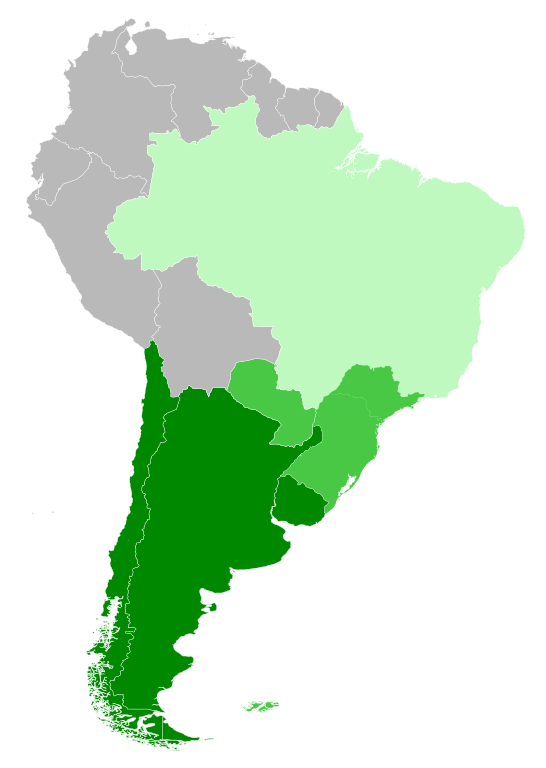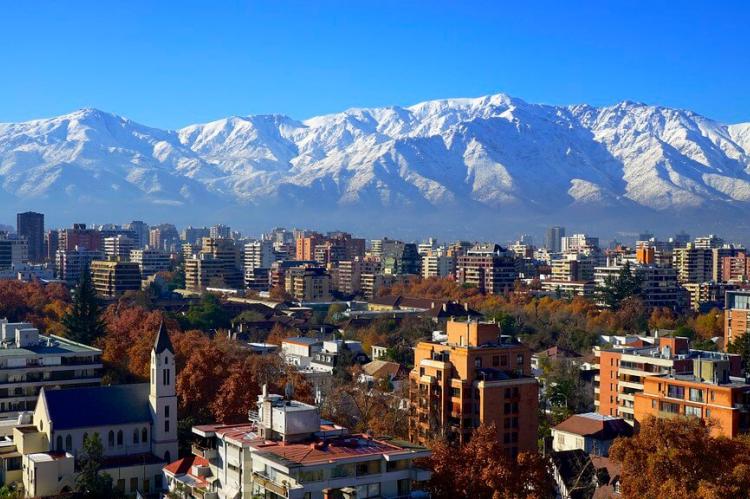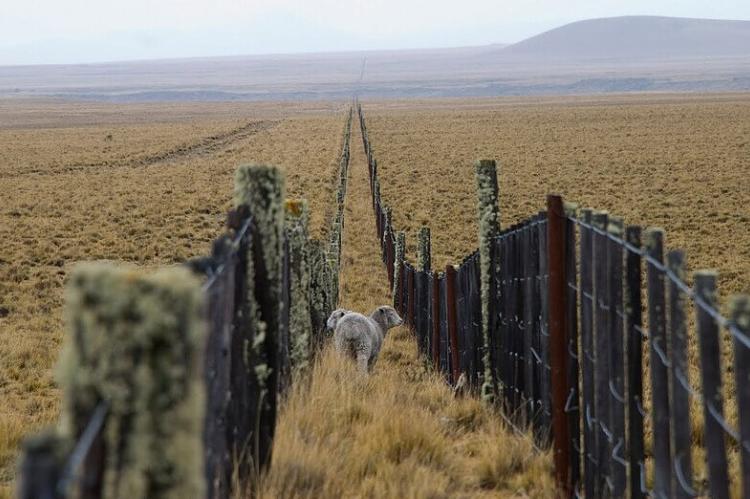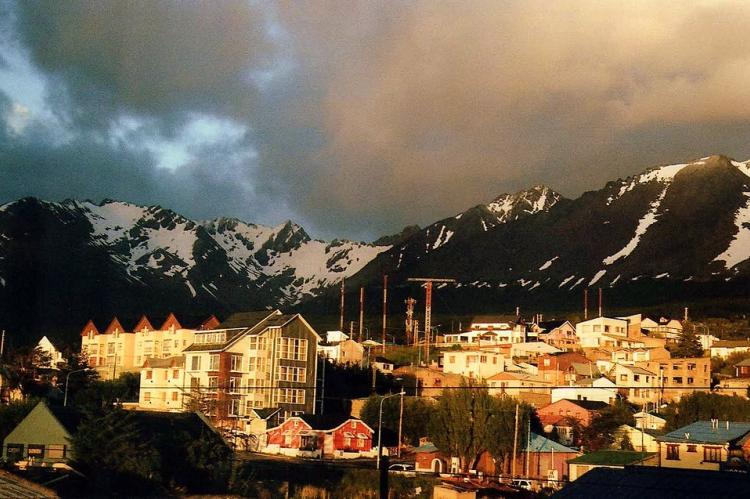The Southern Cone: Harmony and Diversity in South America
The Southern Cone is a captivating geographical and cultural subregion in the southernmost reaches of South America. Distinguished as the most prosperous subregion in Latin America, it traditionally encompasses Argentina, Chile, and Uruguay, occasionally extending to Brazil's southernmost states.
The Southern Cone
Harmony and Diversity in South America
The Southern Cone, a captivating geographical and cultural subregion in the southernmost reaches of the South American continent, traditionally encompasses Argentina, Chile, and Uruguay, with the Pacific Ocean to the west and the Atlantic Ocean to the east.
This subregion is a rich collage of social, economic, and political geography, and its scope occasionally extends to Brazil's southernmost states, including Paraná, Rio Grande do Sul, Santa Catarina, and São Paulo. Paraguay is also considered part of this dynamic region in its broadest context, accounting for shared history and geography.
Distinguished as the most prosperous subregion in Latin America, the Southern Cone is characterized by high life expectancy, the highest Human Development Index in Latin America, a superior standard of living, low fertility rates, temperate climates, significant global market participation, and robust economic growth among its member nations.
Key features of the Southern Cone include:
-
Physical Features: The Southern Cone has various physical features, such as the Andes Mountains, the Pampas grasslands, and the Patagonian desert. The Tropic of Capricorn runs just north of Uruguay and cuts across the northern regions of Argentina.
-
Climate: The region has a temperate climate, with Type C climates dominating in Uruguay, the Pampas region of Argentina, and central Chile. The Southern Cone experiences extremes in weather and climate.
-
Population Distribution: The Southern Cone is an urban region with a pattern of population distribution that reflects the influence of urban centers such as Buenos Aires, Argentina; São Paulo and Rio de Janeiro, Brazil; and Santiago, Chile.
-
Ethnic Consistency: The countries of the Southern Cone have diverse ethnic compositions, with significant European influences due to immigration. Argentina, for example, has a predominantly European heritage, while Brazil has a more diverse population, including indigenous peoples and descendants of enslaved Africans.
-
Economic Growth: Argentina has great potential for economic growth due to its rich natural resources, highly educated population, and strong industrial base. Chile has emerged as a solid and stable country with significant mineral resources and a strong focus on education and innovation.
During the second half of the 20th century, the countries of the Southern Cone experienced periods of political instability, with right-wing juntas and military nationalistic dictatorships ruling the region. In the 1970s, these regimes collaborated in Plan Cóndor against leftist opposition, including urban guerrillas. However, the area has since transitioned to democracy, and the impact of re-democratization on the foreign policies of Argentina, Brazil, and Chile has been significant.

Map depicting the Southern Cone of South America.
A Region of Contrasts
The Southern Cone is a land of stark contrasts, where towering mountains, fertile plains, and unspoiled wilderness harmoniously coexist. Its cultural heritage reflects Indigenous and European influences, creating a unique, vibrant collage of customs and practices.
Economically, the Southern Cone significantly contributes to the global food supply, boasting robust agricultural and industrial sectors. With its breathtaking landscapes, cultural diversity, and economic importance, this subregion is distinct and indispensable in South America.
Geography
The geography of the Southern Cone unveils a diverse array of landscapes, from the majestic Andes Mountains that delineate the western borders of Argentina and Chile to the fertile plains of the Pampas in Argentina, Uruguay, and southern Brazil. With their towering peaks, the Andes Mountains offer some of the most breathtaking natural scenery globally, attracting adventurers and nature enthusiasts alike.
In stark contrast to the imposing mountains, the Pampas extend as vast lowlands across Argentina, Uruguay, and southern Brazil. Renowned for their agricultural productivity, particularly beef production, these fertile plains are pivotal in the global food supply. The Southern Cone is celebrated for its beef and wine industries, which are recognized worldwide.
At its southernmost tip lies the archipelago of Tierra del Fuego, renowned for its rugged, pristine beauty and unique flora and fauna. The Southern Cone also encompasses Patagonia, a vast and sparsely populated region in Argentina and Chile, famous for its awe-inspiring landscapes, including glaciers, fjords, and towering peaks.
Culture
Culturally, the Southern Cone reflects the diverse influences of its immigrant populations, primarily of European descent. Spanish and Portuguese colonial legacies have significantly shaped the region's languages, traditions, and religious practices. Yet, waves of European immigration, particularly from Italy and Germany, have left an enduring imprint on the culture, enriching it with diverse culinary traditions, art, and music.
Argentina, in particular, is renowned for its tango music and dance, symbolizing the country's cultural identity. Argentina and Uruguay are celebrated for their distinctive cuisine, featuring grilled meats, including the famous Argentine barbecue known as "asado." Meanwhile, the Southern Cone's southernmost regions, such as Patagonia, proudly preserve their unique Indigenous cultures and traditions, further enriching the subregion's cultural fusion.
Economy
The Southern Cone is home to some of South America's most advanced economies, with Argentina and Chile leading the way as the largest and most influential. These countries boast diversified economies encompassing agriculture, mining, manufacturing, and services.
Argentina is famed for its agricultural exports, particularly soybeans, beef, and wine, while Chile is a significant copper producer and boasts a thriving wine industry. Uruguay is often hailed as the "Switzerland of South America," maintaining a stable and prosperous economy characterized by robust democratic institutions. Paraguay, although less economically developed than its neighbors, has witnessed rapid economic growth in recent years, partly driven by its burgeoning agribusiness sector.
Conclusion
In conclusion, the Southern Cone is a diverse and dynamic region of South America, characterized by its unique physical features, climate, and cultural influences. The countries of the Southern Cone have experienced significant political and economic transformations in recent decades, and the region continues to evolve and adapt to the changing global landscape.





